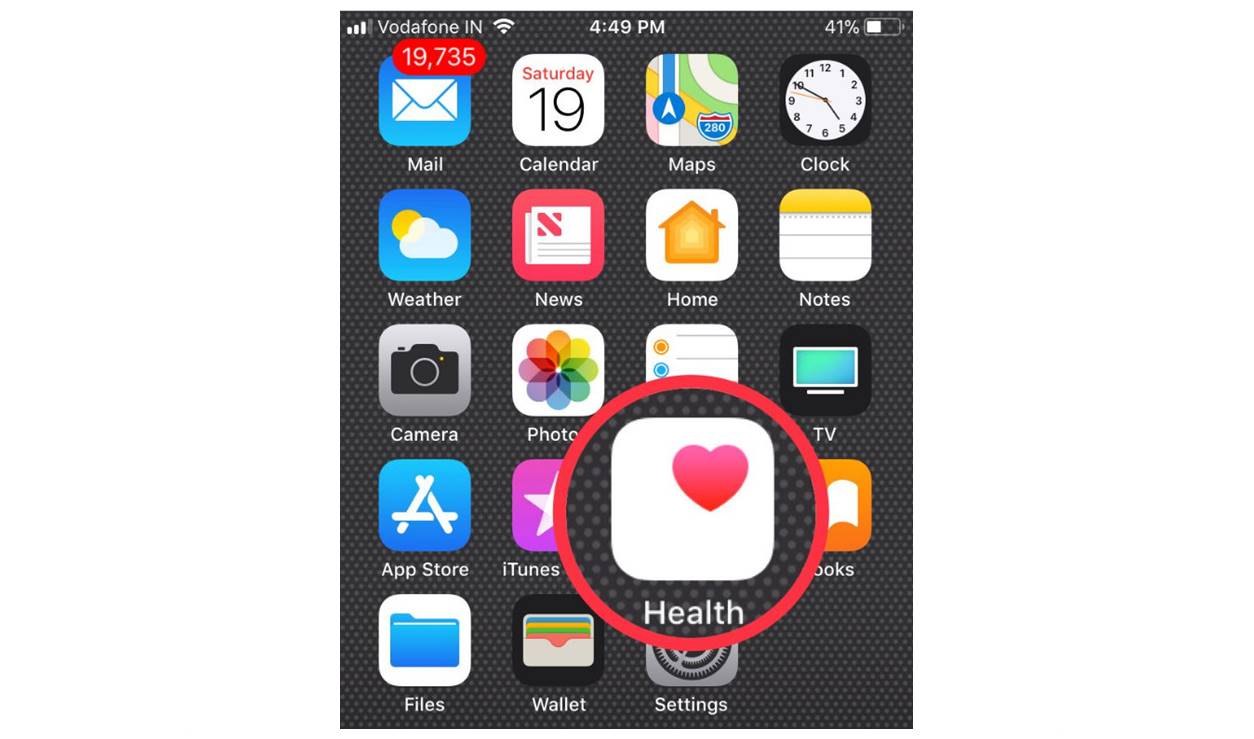

Featured
Why Does My Heart Hurt When I Exercise
Published: September 27, 2023
Discover the reasons behind the discomfort you feel in your heart during exercise in this featured article. Explore possible causes and expert advice.
Introduction
Exercise is often regarded as an essential component of a healthy lifestyle. It helps improve cardiovascular health, enhance physical fitness, and manage body weight. However, engaging in physical activities can sometimes lead to discomfort, including a sensation of heart pain. This can be a concerning experience, leaving individuals wondering about the cause and potential implications.
Understanding why your heart may hurt during exercise is crucial for ensuring your well-being and peace of mind. While the term “heart pain” might sound alarming, it is important to differentiate between discomfort related to muscle soreness and potential heart-related issues. This article will explore the various factors that can contribute to heart pain during exercise, the differences between normal exercise discomfort and potential heart problems, and when to seek medical attention. It will also provide prevention and management strategies to ensure a safe and enjoyable exercise experience.
Before diving into the possible causes of heart pain during exercise, it is important to clarify that the information provided in this article is informational and should not be considered medical advice. If you have concerns or symptoms related to heart pain during exercise, it is always recommended to consult a qualified healthcare professional for a proper evaluation and guidance.
Understanding exercise-induced discomfort
When we engage in physical exercise, our body undergoes various physiological changes to meet the increased demands placed upon it. These changes can lead to sensations of discomfort and even pain. Understanding the different types of exercise-induced discomfort can help us determine whether the heart pain experienced during exercise is normal or requires further evaluation.
One common type of discomfort experienced during exercise is muscular soreness. This is typically felt as a dull ache or stiffness in the muscles and is often referred to as delayed onset muscle soreness (DOMS). DOMS occurs when muscle fibers break down and inflammation occurs as a result of rigorous exercise or physical activity. While this type of discomfort is not directly related to the heart, it can sometimes be mistaken for heart pain due to its location in the chest area.
Another type of exercise-induced discomfort is cardiovascular stress. During exercise, the heart has to work harder to pump oxygenated blood to the muscles and remove waste products. This can cause a temporary increase in heart rate and blood pressure, resulting in a feeling of heaviness or pressure in the chest. This discomfort is usually short-lived and subsides once the exercise intensity decreases or the body adjusts to the increased cardiovascular demands.
Respiratory factors can also contribute to exercise-induced discomfort. During intense physical activity, we tend to breathe more rapidly and deeply to supply our body with oxygen. This can sometimes lead to a feeling of breathlessness or tightness in the chest. While this sensation can be uncomfortable, it is important to note that it is typically related to the respiratory system rather than the heart.
Gastrointestinal factors can also play a role in exercise-induced discomfort. Strenuous exercise can cause blood flow to be redirected away from the digestive system, which can result in gastrointestinal symptoms such as stomach cramps or nausea. These symptoms are usually short-lived and subside once the exercise session is over.
Lastly, nerve-related factors can contribute to exercise-induced discomfort. This can include conditions such as nerve impingement or irritation, which can cause sensations of pain or discomfort in the chest area during physical activity. It is important to consult a healthcare professional to rule out any underlying nerve-related issues if the discomfort persists or worsens.
Possible causes of heart pain during exercise
Experiencing heart pain during exercise can be distressing, and it’s important to recognize the potential causes underlying this discomfort. While there are various factors that can contribute to heart pain during exercise, it is essential to differentiate between normal exercise-induced discomfort and potential heart-related issues. Here are some possible causes to consider:
Muscular factors: Intense physical activity can put strain on the muscles of the chest and surrounding areas, causing muscle soreness and discomfort. However, it’s important to note that muscle-related pain is typically localized and doesn’t radiate to other parts of the body, such as the left arm or jaw.
Cardiovascular factors: Heart pain during exercise can sometimes be linked to cardiovascular issues. Conditions such as angina, which occurs when the heart muscle doesn’t receive enough oxygen-rich blood, can cause chest pain, pressure, or a squeezing sensation. Additionally, heart-related conditions like myocarditis or coronary artery disease may also trigger heart pain during exercise.
Respiratory factors: Respiratory conditions, such as asthma or exercise-induced bronchoconstriction, can cause chest discomfort or tightness during physical activity. These conditions primarily affect the airways and may be accompanied by symptoms like wheezing or shortness of breath.
Gastrointestinal factors: Certain gastrointestinal issues, such as acid reflux or gastroesophageal reflux disease (GERD), can cause a burning sensation or discomfort in the chest area. These symptoms may worsen during exercise due to the increased abdominal pressure and movement.
Nerve-related factors: Nerve impingement or irritation, particularly in the cervical spine region, can lead to referred pain in the chest during exercise. It’s essential to consult a healthcare professional if the pain is severe, radiating, or accompanied by other neurological symptoms.
It is important to remember that these potential causes are not exhaustive, and specific underlying conditions or individual factors can contribute to heart pain during exercise. If you experience persistent or concerning symptoms, it is recommended to consult a healthcare professional for a thorough evaluation and proper diagnosis. They can help determine the cause of the discomfort and recommend appropriate treatment or management strategies.
Muscular factors
When it comes to heart pain during exercise, it’s crucial to consider the role of muscular factors. Intense physical activity can put strain on the muscles of the chest and surrounding areas, leading to muscle soreness and discomfort. Understanding how muscular factors can contribute to heart pain is important for differentiation between muscular pain and potential heart-related issues.
During exercise, muscles are subjected to increased stress and effort, resulting in microscopic damage and inflammation. This process, known as delayed onset muscle soreness (DOMS), can cause muscle tenderness, stiffness, and pain, particularly in the chest area. The pain from DOMS is typically localized to the muscles and does not radiate to other parts of the body.
Engaging in exercises that target the chest muscles, such as bench presses or push-ups, can further exacerbate muscle soreness in this area. This localized muscle discomfort can sometimes be mistaken for heart pain due to its similarity in location.
It is important to note that muscular discomfort is generally considered a normal response to exercise and should subside within a few days. Applying heat or cold therapy, gentle stretching, and taking over-the-counter pain relievers can help alleviate muscle soreness. However, if the pain persists or worsens, or if it is accompanied by other concerning symptoms, it is always advisable to seek medical attention for a proper evaluation.
Incorporating adequate warm-up and cool-down routines into your exercise regimen can also help reduce the risk of muscle soreness. Gradually increasing the intensity and duration of your workouts can allow your muscles to adapt more effectively, minimizing the likelihood of experiencing excessive discomfort.
If you are new to exercise or returning after a long period of inactivity, it is essential to start slowly and gradually increase your exercise intensity. This allows your muscles to adjust and reduces the risk of overexertion that can lead to muscle pain. Additionally, seeking guidance from a qualified fitness professional can help ensure you are performing exercises correctly and using proper form, further minimizing the risk of muscular discomfort.
By understanding the role of muscular factors and proper exercise techniques, you can distinguish between normal exercise-induced muscle soreness and potential heart-related issues. Remember to listen to your body, take necessary breaks, and seek medical attention if you have any concerns about the nature or intensity of the discomfort you experience during exercise.
Cardiovascular factors
When experiencing heart pain during exercise, it is essential to consider cardiovascular factors as a potential cause. The heart plays a central role in supplying oxygenated blood to the body’s muscles during physical activity. However, certain cardiovascular conditions or issues can cause discomfort or pain in the chest area during exercise.
One common cardiovascular factor that can contribute to heart pain during exercise is angina. Angina occurs when the heart muscle does not receive enough oxygen-rich blood to meet its demands. This can result in chest pain, pressure, or a squeezing sensation. Angina is often triggered by physical exertion or emotional stress and tends to subside with rest. If you experience symptoms of angina, it is important to seek medical attention for proper evaluation and management.
Another cardiovascular condition that may be related to heart pain during exercise is myocarditis. Myocarditis is characterized by inflammation of the heart muscle, often caused by viral infections. This inflammation can lead to chest discomfort, shortness of breath, and an irregular heartbeat. If you suspect you may have myocarditis, it is crucial to consult a healthcare professional for a thorough evaluation and appropriate treatment.
Coronary artery disease (CAD) is another cardiovascular factor associated with heart pain during exercise. CAD occurs when there is a buildup of plaque in the arteries that supply blood to the heart. This can result in decreased blood flow, leading to chest pain or discomfort known as angina pectoris. It is important to consult a healthcare professional if you experience chest pain or other symptoms of CAD during exercise.
It is worth mentioning that heart pain related to cardiovascular factors may present differently in different individuals. While some may experience a sharp and intense pain, others may feel a dull ache or pressure in the chest. It is also important to note that heart-related discomfort may radiate to other areas, including the left arm, jaw, or neck.
If you have a known cardiovascular condition or a family history of heart disease, it is recommended to consult with your healthcare professional before starting any exercise program. They can provide guidance on the appropriate level of physical activity and advise on any modifications or precautions you should take to ensure your safety.
If you experience heart pain or discomfort during exercise, it’s important to listen to your body and seek medical attention if the pain is severe, persistent, or accompanied by shortness of breath, dizziness, or other concerning symptoms. Prompt medical evaluation can help determine the cause of the discomfort and ensure appropriate treatment and management.
Respiratory factors
When it comes to heart pain during exercise, it’s important to consider respiratory factors as a potential cause. Engaging in physical activity often leads to an increased demand for oxygen, resulting in changes in breathing patterns. These respiratory changes, in turn, can contribute to sensations of discomfort or tightness in the chest.
One common respiratory factor that can cause chest discomfort during exercise is exercise-induced bronchoconstriction, also known as exercise-induced asthma. This condition occurs when the airways in the lungs narrow in response to physical activity. Individuals experiencing exercise-induced bronchoconstriction may experience wheezing, shortness of breath, chest tightness, or coughing during or after exercise. It is important to consult a healthcare professional for an accurate diagnosis and appropriate management of this condition.
In addition to exercise-induced bronchoconstriction, other respiratory conditions such as asthma, chronic obstructive pulmonary disease (COPD), or allergies can also contribute to chest discomfort during exercise. These conditions can cause inflammation or narrowing of the airways, leading to difficulties in breathing and a feeling of tightness in the chest.
It’s important to note that respiratory-related chest discomfort is primarily focused on the lungs and can be associated with wheezing or shortness of breath. This discomfort is typically distinguished from heart pain due to its localized nature and absence of radiation to other parts of the body, such as the left arm or jaw.
If you experience chest tightness or respiratory distress during exercise, it is advised to consult with a healthcare professional. They can help evaluate your symptoms, perform necessary tests, and provide appropriate treatment options or management strategies.
Proper warm-up and cooldown routines before and after exercise can help prepare the respiratory system and minimize the risk of exercise-induced bronchoconstriction. In some cases, using a bronchodilator medication or avoiding triggers such as cold air or allergens may be recommended. It is crucial to work closely with a healthcare professional to develop an individualized plan that addresses your specific needs and ensures safe and effective exercise participation.
Remember, if you experience significant or worsening respiratory symptoms during exercise, such as severe shortness of breath or chest pain that does not subside with rest, seek immediate medical attention for prompt evaluation and appropriate care.
Gastrointestinal factors
Gastrointestinal factors can play a role in causing discomfort or pain in the chest during exercise. Strenuous physical activity can lead to changes in blood flow and digestion, which can result in gastrointestinal symptoms. Understanding these factors is crucial in distinguishing between gastrointestinal discomfort and potential heart-related issues.
One common gastrointestinal factor that can contribute to chest discomfort during exercise is acid reflux. Acid reflux occurs when stomach acid flows back into the esophagus, causing a burning sensation or discomfort in the chest area, also known as heartburn. The intense movement and increased abdominal pressure during exercise can exacerbate this discomfort.
Gastroesophageal reflux disease (GERD), a chronic condition characterized by frequent acid reflux, can also lead to chest discomfort during exercise. In addition to heartburn, individuals with GERD may experience regurgitation, nausea, or a sour taste in the mouth. Managing and treating GERD with lifestyle modifications and medications prescribed by a healthcare professional can help alleviate symptoms during exercise.
It is important to note that gastrointestinal discomfort is typically concentrated in the upper abdomen or chest area and may be accompanied by symptoms that are specific to the digestive system. This discomfort is not typically associated with radiating pain to other areas of the body, like the left arm or jaw, which is commonly seen in heart-related pain.
While some individuals may experience mild discomfort or heartburn during exercise, others may have more severe symptoms, such as stomach cramps or nausea. If gastrointestinal symptoms persist or significantly interfere with your ability to exercise, it is advisable to consult with a healthcare professional for an accurate diagnosis and appropriate management.
Making certain lifestyle modifications can also help manage gastrointestinal discomfort during exercise. Avoiding large meals or consumption of acidic or greasy foods close to exercise sessions can help reduce the risk of acid reflux. Staying properly hydrated and incorporating fiber-rich foods into your diet can also promote healthy digestion and minimize gastrointestinal issues during physical activity.
If you experience persistent or severe gastrointestinal symptoms during exercise, it is important to seek medical guidance. A healthcare professional can assess your symptoms, provide individualized recommendations, and refer you to a specialist if necessary to ensure proper evaluation and management of any underlying gastrointestinal conditions.
Nerve-related factors
Nerve-related factors can contribute to heart pain during exercise, and it’s important to consider them as a possible cause. Nerves in the chest area can become impinged or irritated, leading to sensations of pain or discomfort. Understanding these nerve-related factors is crucial in differentiating between nerve-related pain and potential heart-related issues.
One common nerve-related factor that can cause chest discomfort during exercise is nerve impingement in the cervical spine region. The nerves in the neck and upper back can become compressed or pinched due to poor posture, muscle imbalances, or spinal problems. This can result in referred pain in the chest during physical activity.
Nerve impingement can generate sensations of discomfort that may be described as sharp, stabbing, or shooting pain. This pain may be present during specific movements or positions, including exercise, and may radiate to other areas of the body, such as the shoulders, arms, or upper back.
It’s important to note that nerve-related pain is typically different from heart pain in terms of location and characteristics. Nerve-related pain is often localized to specific areas, whereas heart pain may be felt more centrally in the chest and can radiate to other parts of the body.
If you suspect nerve impingement or other nerve-related issues as the cause of your chest discomfort during exercise, consult a healthcare professional. They can conduct a thorough evaluation, which may include imaging tests, to determine the source of the pain and provide appropriate treatment or referral to a specialist if necessary.
Prevention and management strategies for nerve-related discomfort during exercise involve addressing underlying causes. This may include improving posture, practicing proper body mechanics during exercise, and engaging in exercises that promote strength, flexibility, and stability in the neck and upper back muscles.
Working with a physical therapist or a qualified fitness professional can help develop an exercise program that targets the affected areas and addresses potential muscle imbalances or postural issues. They can also provide guidance on proper form and technique to prevent further nerve impingement or irritation.
It is important to listen to your body and avoid any exercises or movements that exacerbate the nerve-related pain. Adjusting the intensity or modifying certain exercises to minimize pressure on the affected areas may be necessary. Communicating with your healthcare professional or physical therapist about any pain or discomfort you experience during exercise is essential for proper management and guidance on next steps.
Remember, nerve-related pain during exercise should be evaluated by a healthcare professional to ensure an accurate diagnosis and appropriate treatment plan.
Recognizing the difference between normal exercise discomfort and potential heart-related issues
Understanding the difference between normal exercise discomfort and potential heart-related issues is crucial for ensuring your well-being and peace of mind during physical activity. By recognizing certain factors, you can better differentiate between the two and take appropriate action when necessary.
Normal exercise discomfort, such as muscle soreness or fatigue, is a common response to physical activity. This type of discomfort is typically localized to the muscles being worked and improves with rest and recovery. It is often described as a dull ache, stiffness, or tightness. Normal exercise discomfort should not be severe, persistent, or accompanied by unusual symptoms.
On the other hand, potential heart-related issues can cause a different type of discomfort during exercise. Heart-related pain or discomfort is often characterized by a sensation of pressure, tightness, squeezing, or heaviness in the chest. It may also be accompanied by shortness of breath, dizziness, nausea, or pain radiating to the left arm, jaw, or neck area. The pain may intensify during physical exertion and may subside with rest.
It is important to recognize that everyone’s experience of heart-related symptoms may vary. Some individuals may experience severe pain, while others may only feel mild discomfort or pressure. Additionally, certain factors, such as age, gender, and pre-existing medical conditions, can influence the presentation of heart-related symptoms.
When trying to distinguish between normal exercise discomfort and potential heart-related issues, consider the following:
- Location: Normal exercise discomfort is typically localized to the muscles being worked, while heart-related pain may be felt centrally in the chest or radiate to other areas of the body.
- Duration: Normal exercise discomfort tends to improve with rest and recovery, usually subsiding within a few days. Heart-related discomfort may persist or recur during subsequent exercise sessions.
- Severity: Normal exercise discomfort is usually mild to moderate and tolerable, while heart-related pain can be more pronounced and may limit your ability to continue exercising.
- Accompanying symptoms: Heart-related issues may be accompanied by additional symptoms like shortness of breath, dizziness, or nausea. Muscle-related discomfort typically does not exhibit these symptoms.
If you are unsure about the nature of your discomfort during exercise, it is important to err on the side of caution and seek medical attention. A healthcare professional can evaluate your symptoms, perform appropriate tests, and provide an accurate diagnosis.
Remember, it’s always better to be safe than sorry when it comes to your heart health. If you experience severe or persistent chest discomfort or any concerning symptoms during exercise, seek immediate medical attention.
When to seek medical attention
Knowing when to seek medical attention is essential when experiencing heart pain or any concerning symptoms during exercise. While many instances of discomfort during physical activity are typically harmless and can be attributed to normal exercise-related factors, it is important to recognize when further evaluation is needed. Here are some guidelines to help determine when to seek medical attention:
Severe or persistent pain: If you experience severe or persistent chest pain that does not subside with rest, it is important to seek immediate medical attention. This could be an indication of a heart-related issue that requires prompt evaluation and treatment.
Radiating pain: Chest pain or discomfort that radiates to the left arm, jaw, neck, or upper back may be a sign of a heart-related problem. If you experience such radiating pain during or after exercise, it is advisable to seek medical attention as soon as possible.
Shortness of breath: Difficulty breathing or shortness of breath that is out of proportion to the level of exercise being performed should not be ignored. This could be an indication of a cardiovascular or respiratory issue that requires medical evaluation.
Dizziness or lightheadedness: Feeling lightheaded, dizzy, or faint during or after exercise warrants medical attention. These symptoms can be indicative of heart-related problems or other underlying medical conditions.
Unusual symptoms: Any other unusual or concerning symptoms experienced during exercise, such as excessive fatigue, nausea, profuse sweating, or irregular heartbeat, should be taken seriously. It is important to seek medical advice to determine the cause and appropriate course of action.
Prior history or risk factors: Individuals with a known history of heart disease, high blood pressure, diabetes, or other cardiovascular risk factors should be especially vigilant. It is important to discuss any new or worsening symptoms with a healthcare professional to ensure proper evaluation and management.
It is important to note that the guidelines above are general recommendations and may vary depending on individual circumstances. If you are uncertain about the seriousness of your symptoms, it is always better to err on the side of caution and seek medical advice. Healthcare professionals are trained to assess and interpret symptoms accurately, and they can provide appropriate guidance and recommendations based on your specific situation.
Remember, your health is of utmost importance, and it’s better to seek medical attention and have peace of mind than to ignore potential warning signs.
Prevention and management strategies
Implementing prevention and management strategies can help ensure a safe and enjoyable exercise experience while minimizing the risk of heart pain or discomfort. Here are some strategies to consider:
1. Start slow and gradually increase intensity: Whether you are new to exercise or returning after a period of inactivity, it is important to start with a manageable level of intensity and gradually increase as your fitness improves. This allows your body to adapt to the increased demands and reduces the risk of overexertion.
2. Warm-up and cool-down: Always incorporate a proper warm-up and cool-down routine into your exercise regimen. This helps prepare your body for physical activity by increasing blood flow to the muscles and gradually raising your heart rate. Cooling down after exercise allows your body to gradually return to its resting state.
3. Listen to your body: Pay attention to how your body feels during exercise and be aware of any unusual or concerning symptoms. If you experience persistent or worsening discomfort, shortness of breath, or other alarming signs, stop exercising and seek medical attention.
4. Stay hydrated: Proper hydration is essential for optimal exercise performance and helps maintain cardiovascular health. Drink water before, during, and after your workouts to replenish fluid levels and prevent dehydration.
5. Maintain good overall health: Leading a healthy lifestyle that includes a balanced diet, regular physical activity, stress management, and adequate sleep can contribute to better overall cardiovascular health and reduce the risk of heart-related issues during exercise.
6. Consult a healthcare professional: If you have any pre-existing medical conditions, a history of heart disease, or concerns about your ability to exercise safely, it is advisable to consult with a healthcare professional before starting an exercise program. They can provide individualized recommendations and guidance based on your specific needs and limitations.
7. Exercise under supervision: If you are new to exercise or require specialized guidance, consider working with a certified fitness professional. They can help ensure that you are performing exercises correctly, using proper form, and progressing at a safe and appropriate pace.
8. Modify activities if needed: If you experience discomfort or pain during specific exercises, consider modifying the activity to reduce stress on the affected area. For example, if certain chest exercises exacerbate discomfort, you can try alternative exercises that target the same muscle groups without causing excessive strain.
Remember, the goal is to engage in regular physical activity that enhances your overall well-being. If you experience any concerns or symptoms during exercise, it is always advisable to seek guidance from a healthcare professional. They can provide personalized recommendations and ensure your exercise routine aligns with your individual needs and abilities.
Conclusion
Experiencing heart pain during exercise can be concerning, but it’s important to understand the different factors that can contribute to this discomfort. By distinguishing between normal exercise-related sensations and potential heart-related issues, you can take appropriate action to ensure your well-being and safety.
Exercise-induced discomfort can stem from various sources, including muscular soreness, cardiovascular factors, respiratory issues, gastrointestinal problems, and nerve-related factors. Recognizing the characteristics and location of the discomfort can help differentiate between these factors and potential heart-related issues.
It’s essential to pay attention to accompanying symptoms such as shortness of breath, radiating pain, dizziness, or lightheadedness. These indicators can provide valuable clues about the underlying cause of the discomfort and help determine whether further medical evaluation is necessary.
Prevention and management strategies play a vital role in maintaining a safe exercise routine. Gradually increasing intensity, warming up and cooling down, listening to your body, staying hydrated, maintaining overall health, seeking professional guidance when needed, modifying activities if necessary, and consulting with healthcare professionals are all important steps to take.
Remember to prioritize your health and seek medical attention if you experience severe or persistent chest pain, radiating pain, shortness of breath, or any other concerning symptoms. Only a healthcare professional can provide an accurate diagnosis and appropriate treatment plan.
By understanding the difference between normal exercise discomfort and potential heart-related issues, and by implementing proper prevention and management strategies, you can continue to enjoy the many benefits of physical activity while ensuring your safety and well-being.








